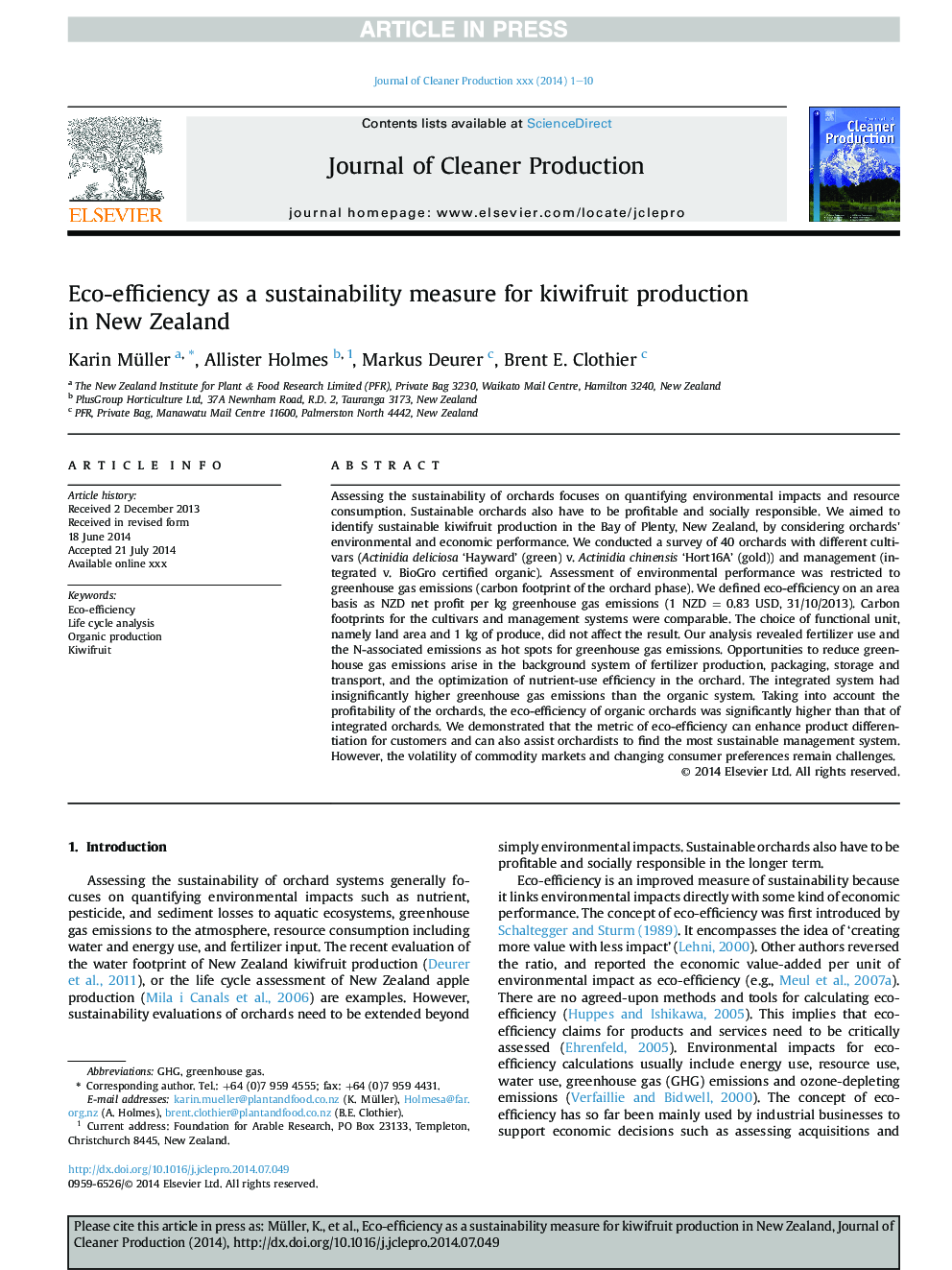| Article ID | Journal | Published Year | Pages | File Type |
|---|---|---|---|---|
| 8103208 | Journal of Cleaner Production | 2015 | 10 Pages |
Abstract
Assessing the sustainability of orchards focuses on quantifying environmental impacts and resource consumption. Sustainable orchards also have to be profitable and socially responsible. We aimed to identify sustainable kiwifruit production in the Bay of Plenty, New Zealand, by considering orchards' environmental and economic performance. We conducted a survey of 40 orchards with different cultivars (Actinidia deliciosa 'Hayward' (green) v. Actinidia chinensis 'Hort16A' (gold)) and management (integrated v. BioGro certified organic). Assessment of environmental performance was restricted to greenhouse gas emissions (carbon footprint of the orchard phase). We defined eco-efficiency on an area basis as NZD net profit per kg greenhouse gas emissions (1 NZDÂ =Â 0.83 USD, 31/10/2013). Carbon footprints for the cultivars and management systems were comparable. The choice of functional unit, namely land area and 1Â kg of produce, did not affect the result. Our analysis revealed fertilizer use and the N-associated emissions as hot spots for greenhouse gas emissions. Opportunities to reduce greenhouse gas emissions arise in the background system of fertilizer production, packaging, storage and transport, and the optimization of nutrient-use efficiency in the orchard. The integrated system had insignificantly higher greenhouse gas emissions than the organic system. Taking into account the profitability of the orchards, the eco-efficiency of organic orchards was significantly higher than that of integrated orchards. We demonstrated that the metric of eco-efficiency can enhance product differentiation for customers and can also assist orchardists to find the most sustainable management system. However, the volatility of commodity markets and changing consumer preferences remain challenges.
Related Topics
Physical Sciences and Engineering
Energy
Renewable Energy, Sustainability and the Environment
Authors
Karin Müller, Allister Holmes, Markus Deurer, Brent E. Clothier,
